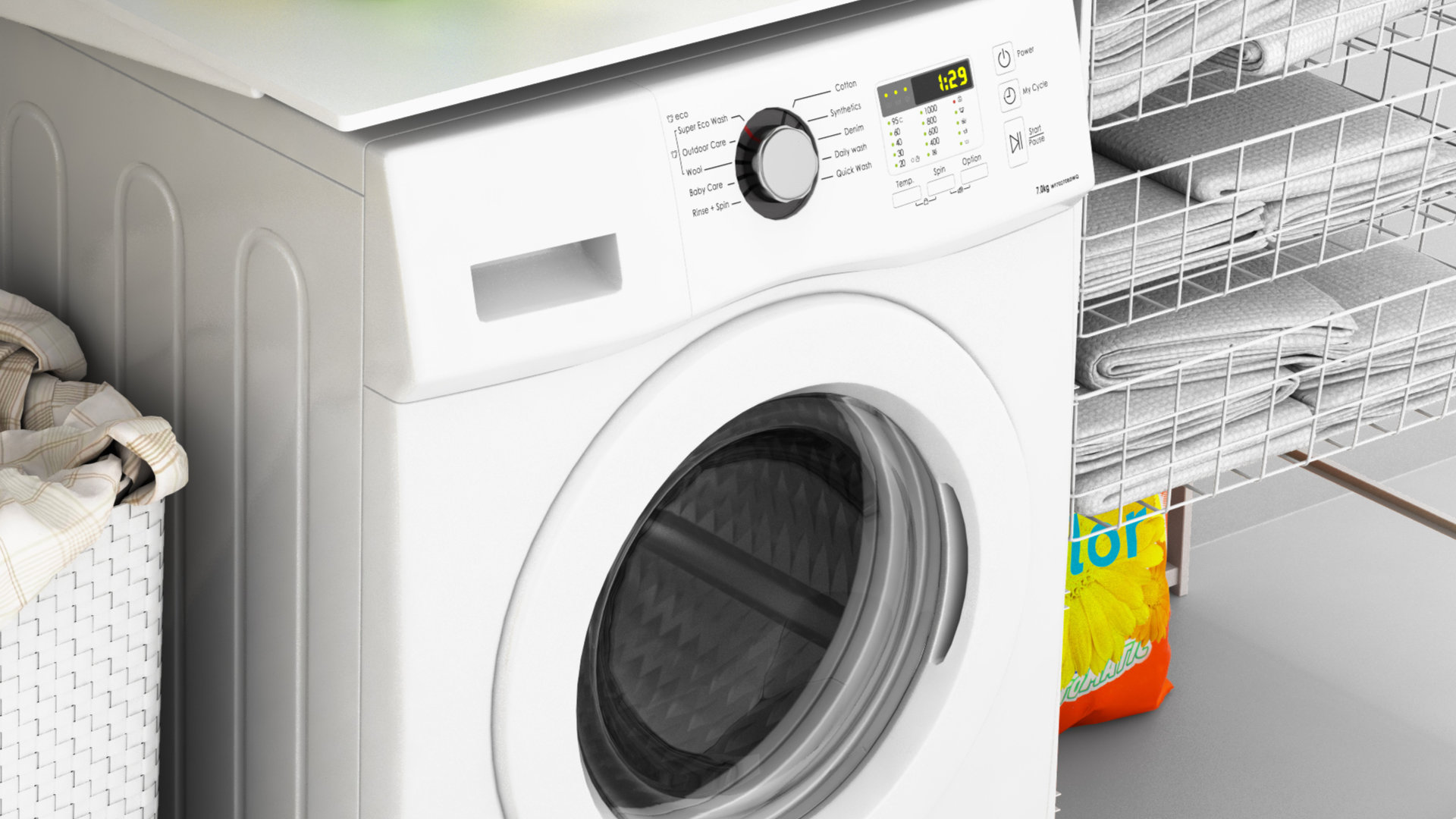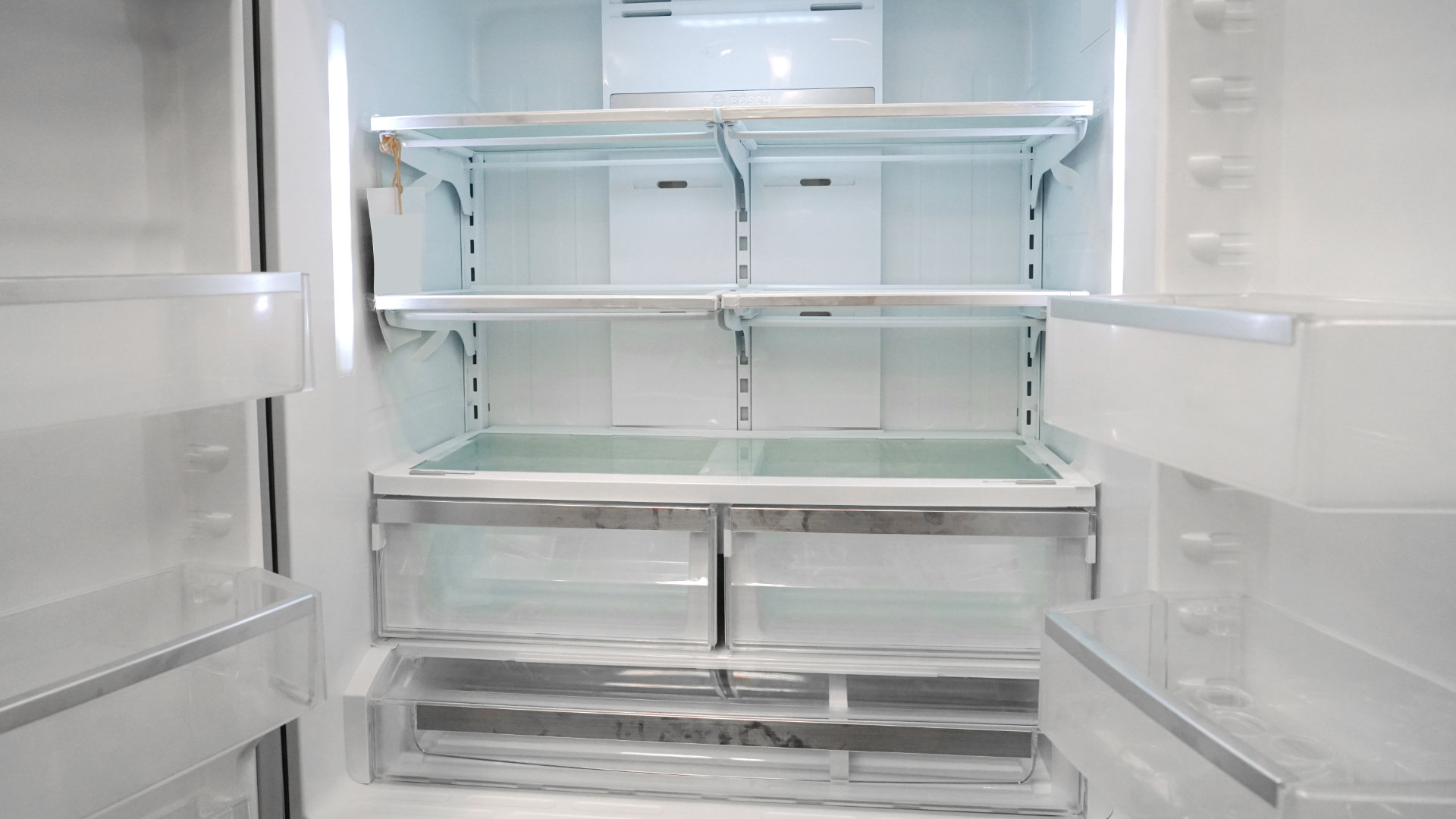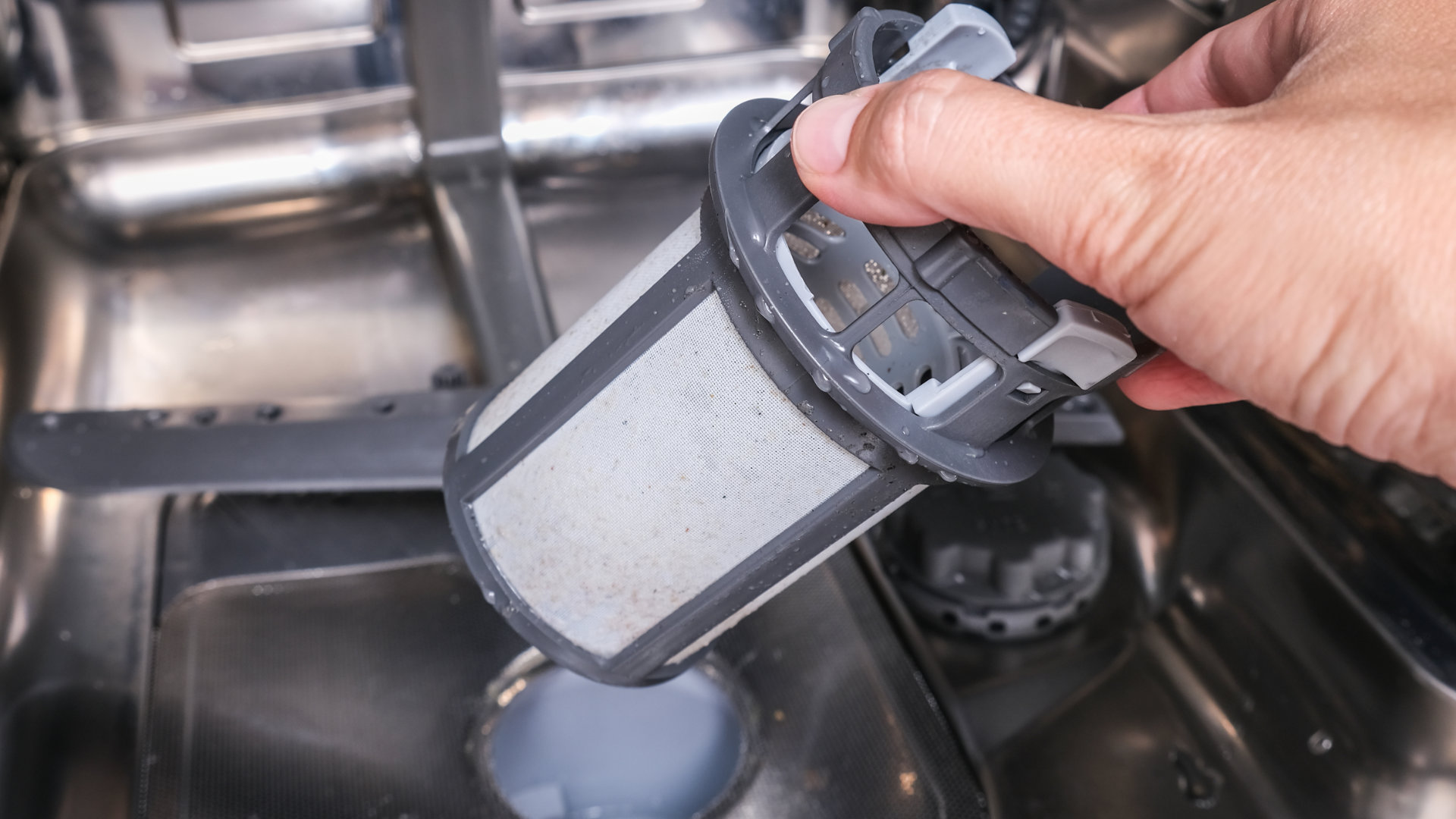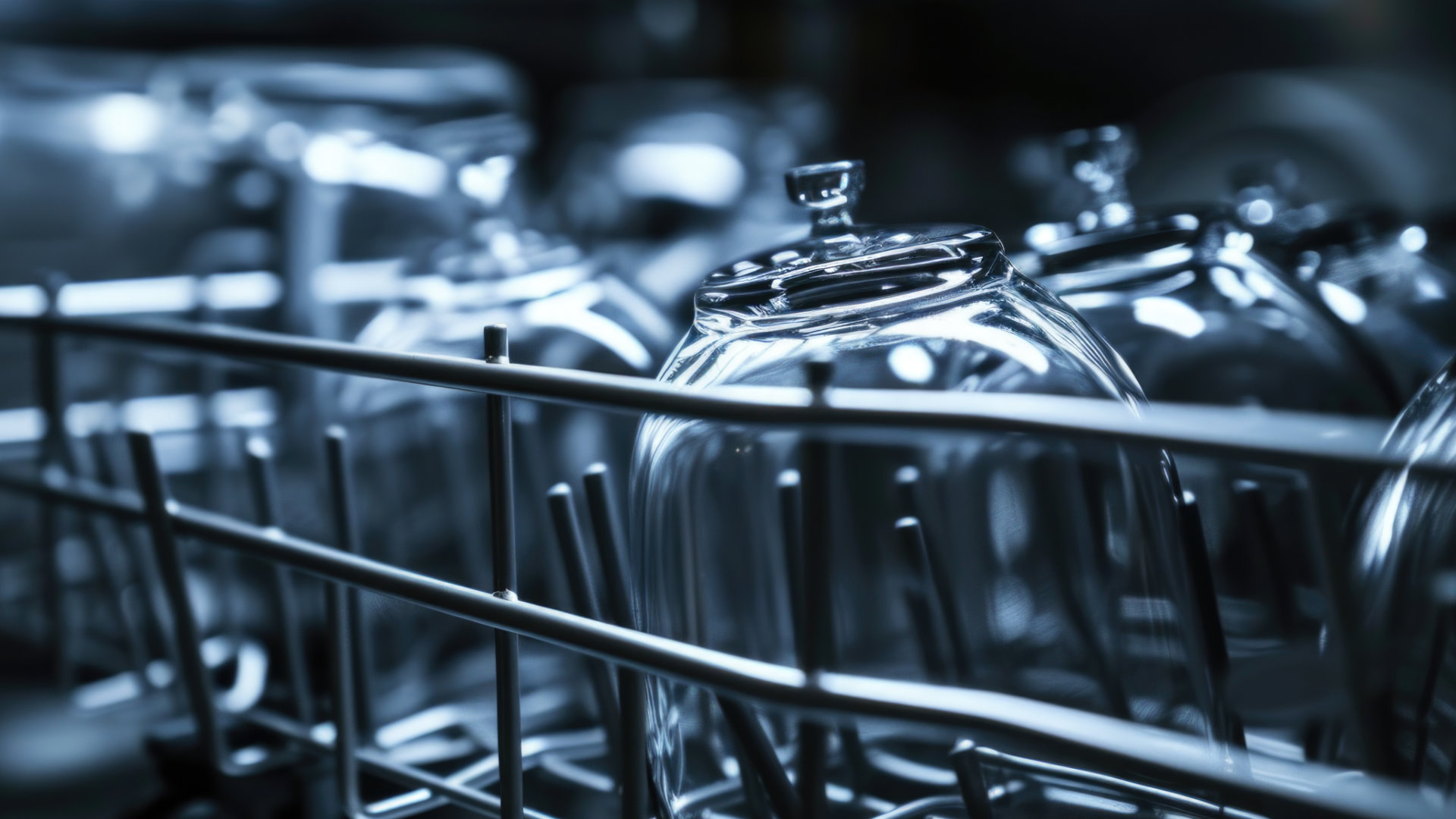
An OE error code on an LG washer is an indication of a drainage issue. It means that the machine has gone through the wash cycle, but is unable to drain the water remaining in the drum. This could be caused by a variety of issues, including issues with the drainage hose, the washing machine filter, and the drain pump.
Don’t panic, though—a lot of these issues are completely fixable! Read on to find out how to have your LG washer up and running again.
This guide applies to all popular LG washing machine models, including:
RLM20K
WD-10271BD
WD-11275BD
WD-13276BDM
WD-90282BD
WDP2W
WDP3B
WDP3N
WDP3R
WDP3S
WDP3W
WM0642HW
WM2016CW
WM2050CW
WM2101HW
WM2233HW
WM2277HS
WM2277HW
WM2301HR
WM2487HRM
WM2487HWM
Inspect the Filter
The filter or coin trap in your LG washer traps lint, debris, and any small objects that may end up in your laundry tub during the wash cycle. If it’s been a long time since the filter has been emptied, it can begin to obstruct water drainage and can even lead to the OE error code.
Signs of a clogged filter include poor drainage, vigorous or longer-than-usual spin cycles, and wetter-than-expected clothes.
To fix:
- Locate the filter. This will differ depending on the model of your washer, but in most LG washers it can be found on the front bottom panel. Check your LG manual if you’re having issues finding yours.
- Open the filter cover to access the filter. Make sure you have old towels on hand in case of any excess water.
- Remove the filter by turning it counterclockwise and pulling it out of the washer.
- Manually clear out any large clogs from the filter, then rinse it under running water. If it’s particularly dirty, try using a small scrubbing brush or old toothbrush to get it totally clean.
- Use a rag or cloth to carefully clean out the filter housing to ensure there is no grime or debris remaining.
- Put the filter back in and close the cover.
- Run a test cycle to see if the error code has cleared.
Check the Drain Hose
The drain hose connects the tub of the washing machine to your household drainage system. It’s where all of the used water flows out of the washer. In most models, this will run from the back of the washer into a drainage point—either a drainpipe or a sink tub. If the drainage hose becomes blocked in any way, water won’t be able to efficiently drain from your LG washer.
If your drain hose has a kink or blockage, you might notice your clothes are emerging from the machine wetter than expected. You may also notice your washer making more noise than usual during the spin cycle as it works harder to try and get rid of the water. If the issue becomes bad enough, the OE error code will appear.
To fix this:
- Inspect the hose and check it for kinks. If it appears obviously kinked or bent, straighten this out and then test to see if the draining issue is fixed.
- Check the hose interior for blockages. Have a towel on hand to catch any residual water, then disconnect the hose from the washing machine and take it out of the drainpipe.
- Try running water through the hose to see if it flows freely. If not, use a length of wire or a plumbing snake if you have one to clear the clog.
- Once it’s cleared, reattach it to the washer and run a new cycle to see if the error code is resolved.
Check the Drain Placement
You’ve already checked the drain hose for kinks and clogs, but did you know that the placement of the hose is also important? Incorrect placement can prevent your washer from draining completely, leading to the OE error code.
If the hose is placed too high, it will struggle to remove all the water from the drum. If it’s placed too low, it can lead to siphoning, which means that the water is removed too quickly from the drum. Here’s how to get your hose placed perfectly:
- First, consult your LG manual. It will state the correct height for the hose to be placed at. Most manuals typically advise positioning it between 18 to 48 inches from the floor.
- Adjust the height of the drain hose so it meets the specifications outlined in your manual.
- Try using a hose clamp to ensure that the drainage hose stays in place. Due to the nature of a spin cycle, it’s possible that the hose might get bumped out of place if it isn’t clamped.
- Run a test cycle to see if the error has cleared.
Check the Drain Pump
If you’ve checked everything in our guide so far and the error code persists, you could have an issue with the drain pump. This is a little more difficult when it comes to DIY tasks, so if you don’t feel comfortable with this step you can call in a professional.
To check the drain pump:
- Listen for unusual noises during the wash cycle. A faulty drain pump may be loud or make irregular sounds.
- Turn off the machine and access the drain pump. You can refer to your user manual for the exact location of your model.
- Check for obstructions in the pump’s impeller. This can be enough to fix the drainage issue.
- If you can’t see any obstructions or visual damage to the pump, use a multimeter to check if the pump is functioning. If it shows no continuity, it means it’s faulty.
- If it’s faulty, it will need to be replaced. You can order a replacement part from the manufacturer and replace it following the manufacturer’s instructions.

How to Reset a Whirlpool Refrigerator Ice Maker

6 Reasons Your LG Refrigerator Is Not Making Ice

Kenmore Fridge Ice Maker Not Working? 5 Ways to Fix It

How to Remove Fish Smell from Your Refrigerator

How To Fix Bosch Dishwasher E24 Error

Troubleshooting a Whirlpool Dishwasher Not Draining

Why Is Your Fridge Water Not Working, but Ice Is?

How to Fix the E15 Bosch Dishwasher Error Code

How Much Power Does a Microwave Use?

How to Properly Clean Refrigerator Coils

How to Fix an LG Washer Showing OE Error Code

Troubleshooting a GE Dishwasher with No Power and No Lights

10 Reasons Why Your Bosch Dishwasher Won’t Start

Troubleshooting the F5 Error Code with a Maytag Washer


